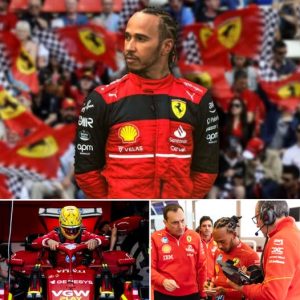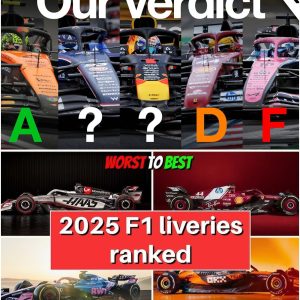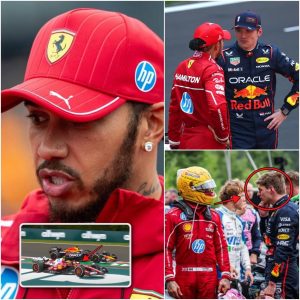The 2025 Formula 1 season has been a challenging and disappointing one for Scuderia Ferrari. Despite holding second place in the Constructors’ Championship, Ferrari’s drivers, Charles Leclerc and Lewis Hamilton, sit in fifth and sixth positions in the Drivers’ Championship. Considering how close Ferrari were to McLaren at the end of the 2024 season, this performance has been far below expectations.
McLaren, whose significant off-season improvements have taken them to the front of the pack, have made enormous gains. Ferrari, on the other hand, have struggled to keep up with their rivals, and the results have been telling—Ferrari has yet to win a race this season. While Leclerc has secured five podiums, Hamilton has yet to finish on the podium, something that has intensified the spotlight on his struggles with his new team.
Despite this, Ferrari is setting some ambitious goals for the second half of the season, even if those goals come at the cost of their development work for the 2026 season. The situation has drawn comment from former Ferrari driver Carlos Sainz, who has spoken about Hamilton’s struggles, comparing them to his own difficulties adjusting to a new car. This article delves into the challenges Ferrari faces, the team’s ambitions, and Hamilton’s ongoing struggles, while also considering the implications for the 2026 season.
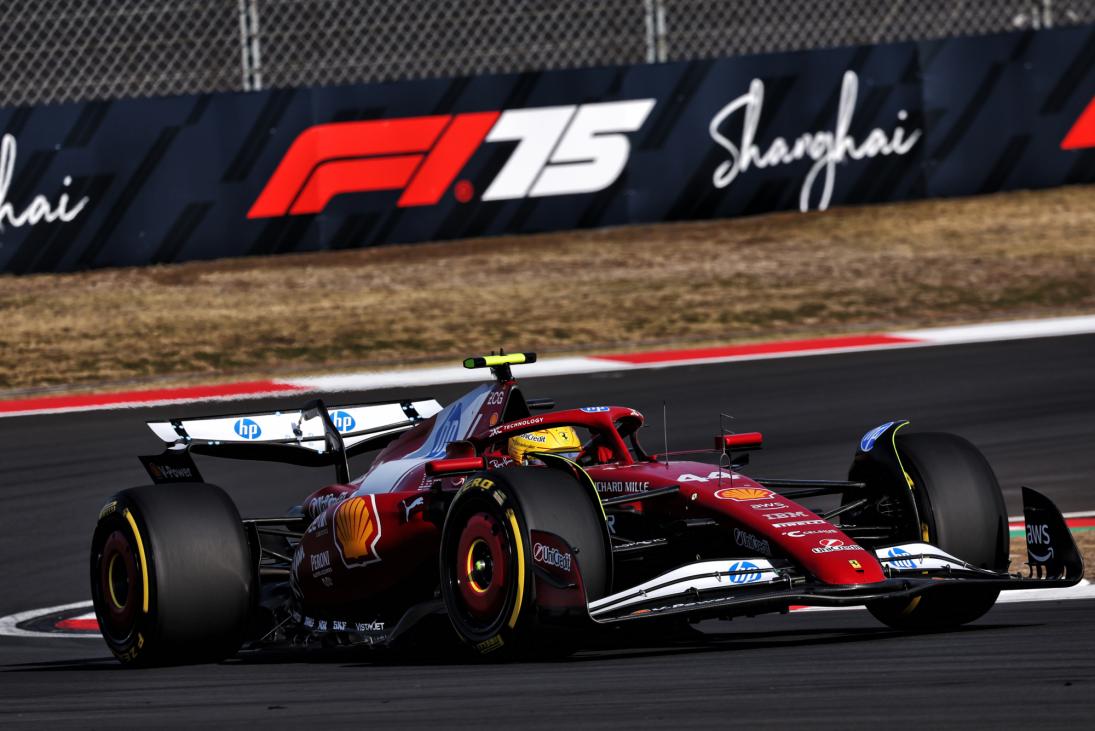
The Technical Landscape and Development Priorities
Formula 1 is at a pivotal moment in terms of technical regulations. With a new set of regulations coming in 2026, many teams have already shifted their focus toward the new season, choosing to prioritize development for next year rather than for the current campaign. This shift has resulted in many teams halting further developments on their 2025 cars, directing their resources instead toward preparing for the new technical challenges that await.
Ferrari, however, are determined to finish the 2025 season as strongly as possible. Team principal Fred Vasseur recently signed a contract extension, confirming his role at the helm of the team through the 2026 season. Vasseur’s stability at the top is seen as crucial to the team’s long-term success, especially as Ferrari prepares for a significant overhaul of both the technical regulations and their power unit for 2026.
“We are fighting for P2 in the championship with Mercedes and Red Bull, and we want to win some races before the end of the season,” Vasseur said following his contract extension after the Belgian Grand Prix. However, while Ferrari’s lofty ambitions are commendable, the team finds itself well behind the leaders, and the gap to McLaren and Red Bull feels insurmountable. The team’s inability to secure a win so far, especially with McLaren looking so strong, makes a race victory appear increasingly unlikely.
Ferrari’s Strategy and Performance: Will They Fight for Second?
Despite the season’s disappointing results, Ferrari remains focused on securing second place in the Constructors’ Championship. In this pursuit, they are aiming to finish ahead of Mercedes and Red Bull, both of which are fierce competitors for that second spot. However, securing second in the Constructors’ Championship comes at a cost.
One of the key issues Ferrari faces is its limited wind tunnel time. In Formula 1, the amount of wind tunnel and Computational Fluid Dynamics (CFD) testing time a team is allocated is based on its finishing position in the Constructors’ Championship. The higher the position, the less testing time they receive for the following season.
As a result, Ferrari is considering the trade-off between chasing a higher championship position in 2025 and sacrificing valuable development time for 2026. If Ferrari were to finish third or lower in the Constructors’ Championship, they would be granted more time in the wind tunnel, which would help in preparing for the new technical regulations and the introduction of a new power unit in 2026.
However, Ferrari’s current focus seems to be on achieving the highest position possible in the 2025 standings, even if it means sacrificing long-term development time. Charles Leclerc has been outspoken on this matter, confirming that securing second place in the Constructors’ Championship remains a priority. When asked about the impact of wind tunnel time on their 2026 development, Leclerc said, “We just want to finish as high as possible and then we’ll deal with whatever amount of hours in the wind tunnel we have.”

Hamilton’s Struggles: A Challenging Transition
Among Ferrari’s biggest concerns this season has been the performance of their marquee driver, Lewis Hamilton. The seven-time World Champion made the high-profile switch from Mercedes to Ferrari at the end of 2024, but the transition has proven to be much harder than anticipated. Hamilton has struggled with the car’s balance, especially under braking, citing a significant difference between the Ferrari and Mercedes power units.
Hamilton’s lack of podium finishes has led to criticism, with some questioning whether he still has the desire to compete at the highest level. After a disappointing race at the Hungarian Grand Prix, Hamilton expressed frustration, calling himself “absolutely useless” and suggesting that Ferrari might need to consider a change in driver. However, Hamilton’s issues with the car, particularly with the engine braking, are well-documented, and his frustration is understandable.
The differences between the Mercedes and Ferrari engines are profound, and it’s clear that Hamilton is struggling to adapt. Having spent over a decade driving with Mercedes, Hamilton has become accustomed to how their engine behaves, especially when it comes to braking. Switching to Ferrari has required Hamilton to adjust his driving style significantly, something that has proved difficult even after several races.
Carlos Sainz, Hamilton’s teammate at Ferrari, has faced similar challenges. Sainz made a switch from Ferrari to Williams for the 2025 season, making room for Hamilton, and has spoken candidly about the differences in engine braking between the two teams. “The way you use the gears, the downshift, and how it goes into engine braking, the transition from the brake migration to the engine braking is different. You have to change your driving style for sure,” Sainz explained.
Despite these challenges, both Hamilton and Sainz are committed to adapting and improving their performance. Sainz has admitted that after 14 races, he still hasn’t fully adjusted to his new car, and Hamilton’s situation mirrors this struggle. Both drivers will need to continue working on their driving styles to get comfortable before the 2026 season, when everything will change with new regulations.
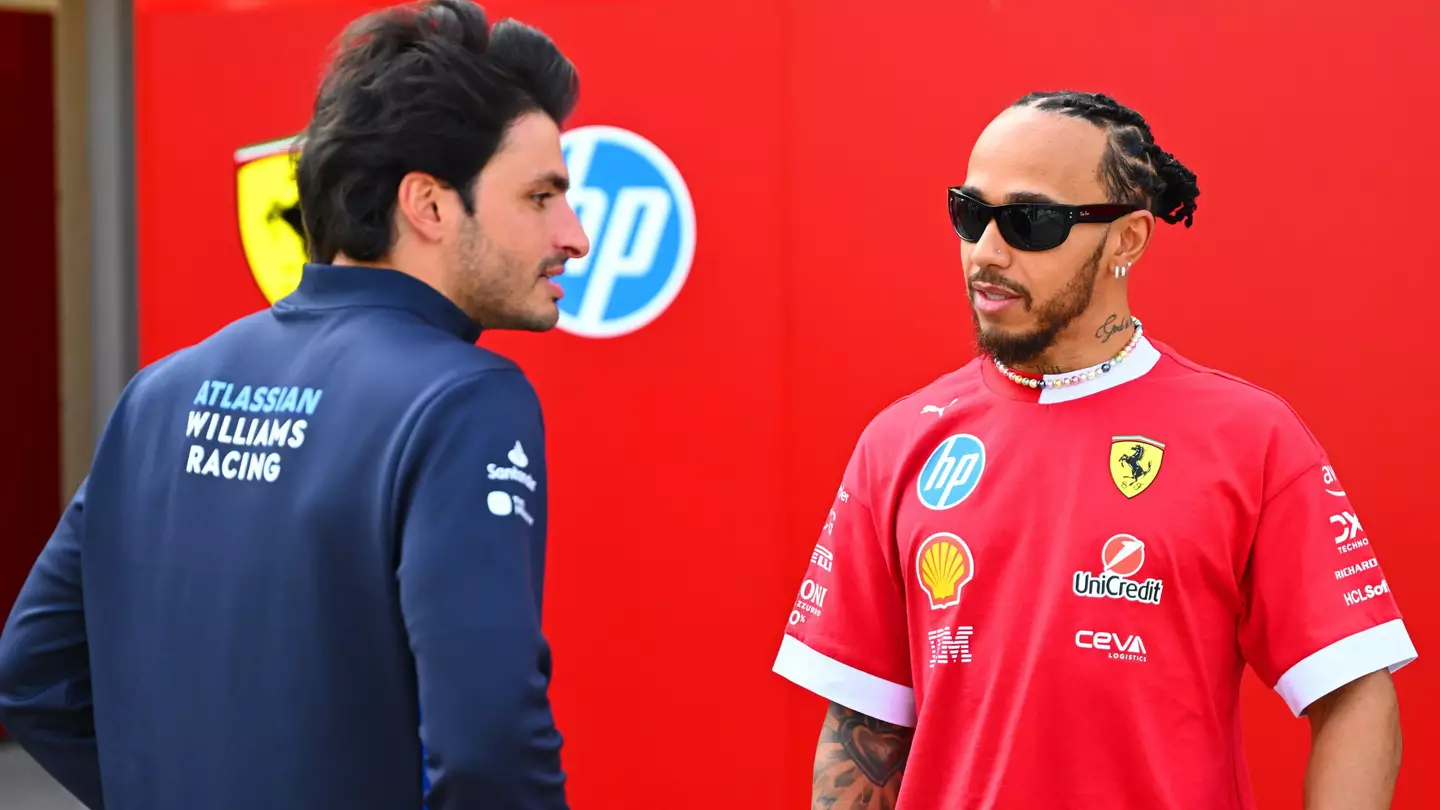
Can Ferrari Turn Their Season Around?
With just a handful of races left in 2025, Ferrari has set ambitious goals, despite the challenges they face. Their focus is on securing second place in the Constructors’ Championship and hopefully achieving their first race win of the season. However, given McLaren’s dominance, Ferrari will need a lot to go their way—McLaren mistakes or mishaps—if they are to stand a chance of taking a victory.
Hamilton’s struggles, combined with Ferrari’s technical issues, make it seem unlikely that the team will be able to win a race in 2025, but their focus on performance development and their commitment to finishing strong is a positive sign. The team has managed to secure second place in the Constructors’ Championship for now, but their ultimate goal will be to continue pushing for improvements as they prepare for 2026.
Conclusion
Ferrari’s 2025 season has been a tough one, marked by underperformance, struggles with driver adaptation, and the looming technical changes of 2026. While they remain hopeful and have set their sights on second place in the Constructors’ Championship and their first win of the season, the path ahead is fraught with difficulties.
The team’s ability to balance short-term ambitions with long-term development will be crucial in determining whether they can mount a successful challenge in the future. For Hamilton and Sainz, the adjustment to Ferrari’s unique handling characteristics will remain a key focus, and only time will tell whether they can overcome these hurdles in time for a competitive 2026 season.
What do you think? Can Ferrari turn things around and secure a win in 2025? Or will their struggles continue throughout the season? Let me know your thoughts!
